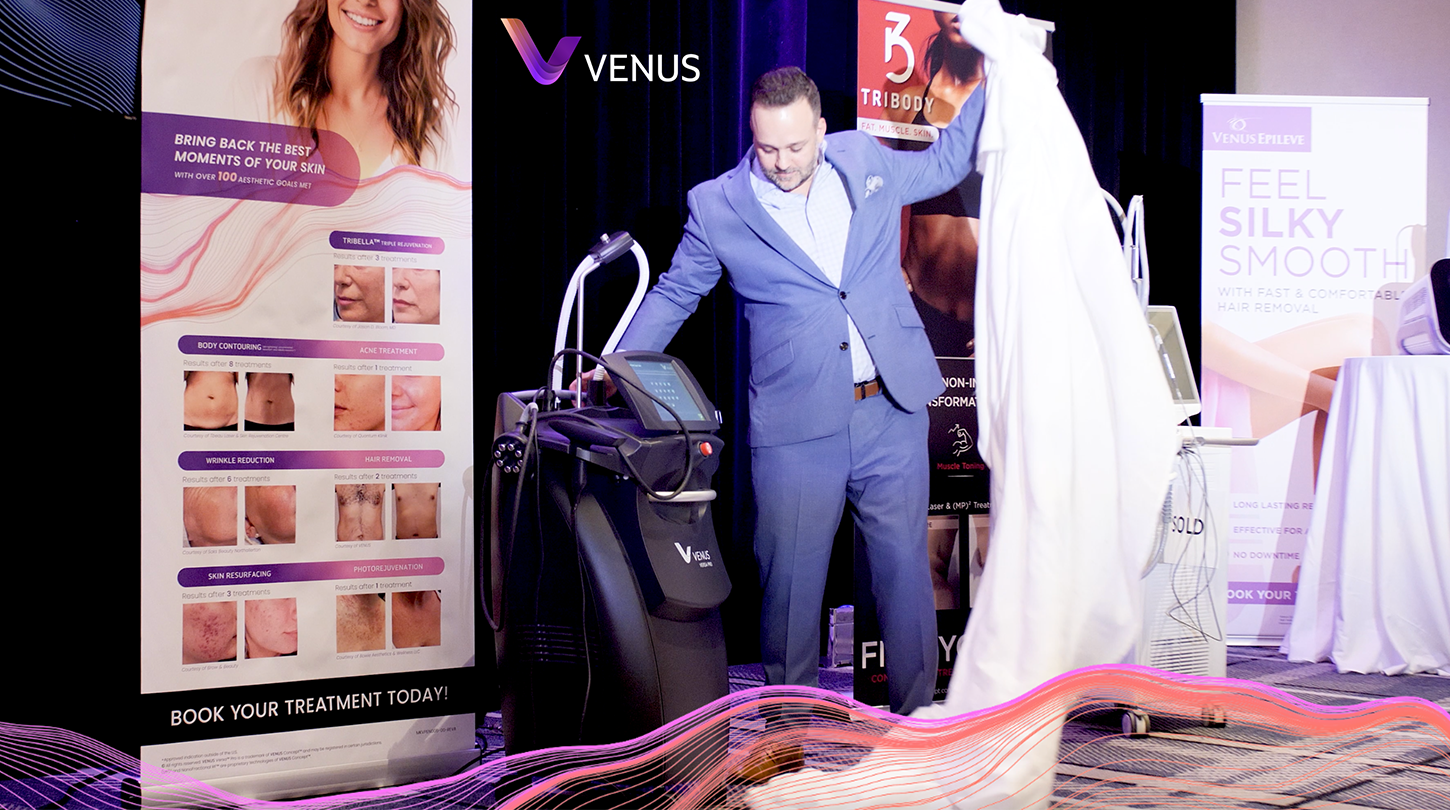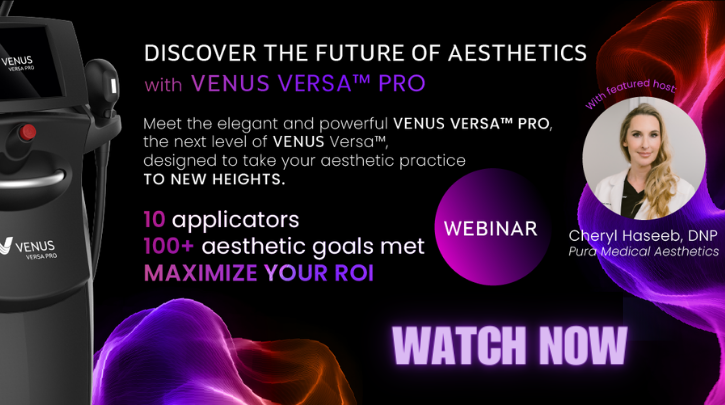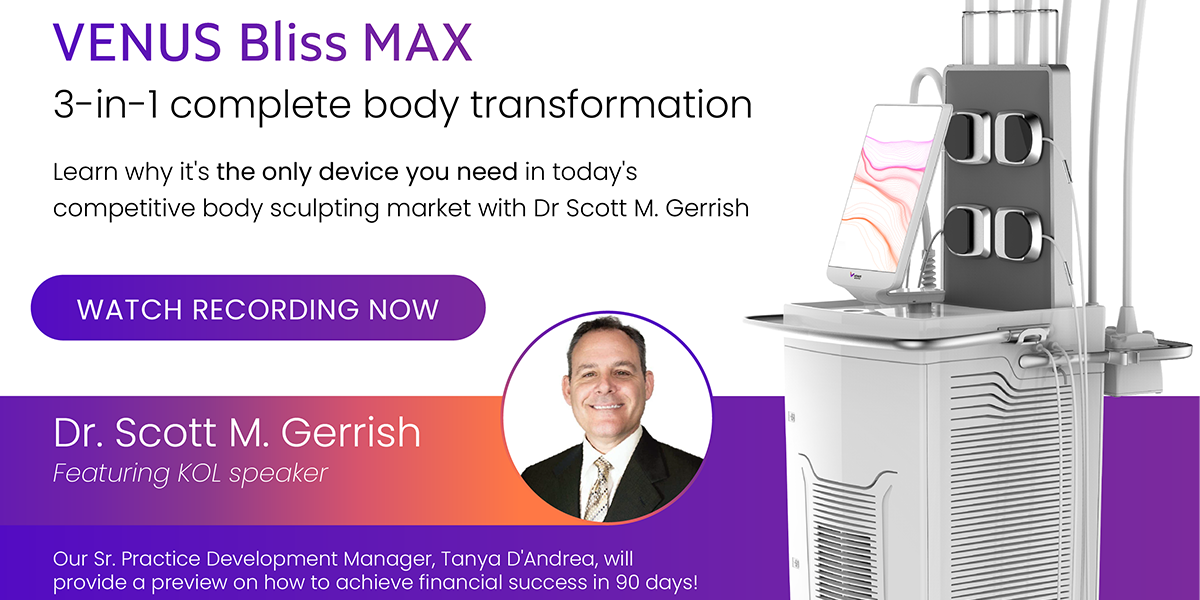5 Tips for Patient Selection for Non-Invasive Fat Treatments

While surgical liposuction still remains the most common method to remove fat and contour the body, non-invasive body contouring procedures have seen explosive growth in the past five years, according to the most recent data available from the American Society for Aesthetic Plastic Surgery (ASAPS). With new laser and other heat-based energy modalities entering the non-invasive fat treatment space, patients are now better able to target fat non-invasively, offering liposuction alternatives to patients looking to achieve a tweak without the downtime. In addition, non-invasive alternatives are catching the attention of a growing number of patients searching for treatments that offer more natural-looking results without the potential for undesirable surgical scars.
Of course, as with any procedure, non-invasive lipolysis may not be the right fit for every patient enquiring about its benefits. While a non-invasive hyperthermic method offers a highly desirable alternative to many patients unwilling or unable to undergo an invasive procedure, it remains pertinent that your clinic properly assesses each individual’s needs and candidacy for a particular treatment to ensure you can offer the safe, effective results they want without risking dissatisfaction. The following are some factors to consider before recommending a customized treatment plan that includes Venus Bliss™ non-invasive lipolysis treatments to prospective patients.
How to Approach Patient Selection with Venus Bliss™ Fat Treatments
Start with the Typical Contraindications
As with any treatment, there are particular health factors that could rule a patient out as an ideal candidate for non-invasive lipolysis. A thorough interview during your initial consultation with a prospective patient should provide the information you need to cross these factors off your list. For Venus Bliss™ in particular, the following contraindications apply:
- Open lesions, wounds, or any sign of compromised wound healing
- An unrepaired abdominal hernia
- The patient is pregnant or breastfeeding
- A history of immunodeficiency disorders and/or the use of immunosuppressants
- A coagulation disorder or history of keloids
- Any neuropathic disorder, impaired skin sensation, or diabetic neuropathy
- Skin sensitivity disorders and/or the use of photosensitized medications
- An active tan or exposure to artificial tanning devices/excessive sunlight one week before or after the laser diode treatment
- Current use of antiplatelets, anti-inflammatories, thrombolytics, anticoagulants, or heavy aspirin (more than 81 mg per day)
- History or evidence of squamous cell carcinoma or melanoma
- Moderate to severe visceral fat, cellulite, or loose skin in the treatment area (this factor in particular may not fully rule out a patient but rather denote that these concerns may need to be treated before proceeding with a series of Venus Bliss™ fat treatments)
Establish the Prospective Patient’s BMI
For prospects, non-surgical fat treatments may sound like a quick fix for excess fat, particularly because many online resources suggest they may be an alternative to liposuction. For these reasons, you may have to educate the patient on the parameters of this procedure.
An ideal candidate for a course of non-surgical fat treatments has a body mass index (BMI) of 30 or less. A patient’s BMI is calculated by weight in kilograms divided by height in meters squared. If the patient’s measurements are taken in pounds and inches, the formula used to calculate the BMI is weight in pounds divided by height in inches squared, which is then multiplied by 703. You can also calculate a patient’s approximate BMI by inputting their height and weight in this BMI calculator from the National Institutes of Health (NIH). Non-invasive fat treatments are only ideal for patients with a BMI of 30 or less. Further still, the American Society of Plastic Surgeons (ASPS) recommends that ideal candidates are within 30% of their desired body weight for improved targeting of fat cells within defined treatment areas.
One note to highlight in this step is that when discussing weight with patients, word choice is important. Research notes that most patients prefer addressing fat with terms like “weight” or “BMI,” while avoiding “fat,” “fatness,” “obesity,” or the like. This may seem like a minor detail, but prioritizing positive words and being sensitive to a patient’s weight concerns can go a long way in helping to form a strong first impression with a patient while establishing a positive fat reduction consultation.
Note that Results Take a Little Time
Over the past decade, non-invasive fat reduction device technologies have been refined with cryolipolysis, radio frequency (RF), ultrasound, and laser being the top current modalities on the market. While the different devices have varying mechanisms of action ( you can weigh the pros and cons here ), they all seek to damage or destroy fat cells, which are then eliminated by the body. This process takes time. While patients may be eager to see results, it’s important to clarify that non-surgical fat treatments are not a quick fix. While every patient is unique with their needs, some patients may be able to achieve their goals in one treatment session while others may need multiple sessions to achieve their desired outcomes. Further still, typically speaking, optimal results develop three to six months post-treatment. For patients who may see this option as a quick fix, their expectations simply need to be managed by addressing the fact that patience and consistency in their treatment schedule are key to achieving their desired outcomes. If they remain overly eager to see results, they may not be the best fit at this time.
Consider What the Patient Wants to Target
Generally speaking, ideal candidates for any medical aesthetic treatment should have a fairly strong self-image. Though there may be one or two small tweaks a candidate would like to make to their body, their overall self-image should be positive and well-grounded. In the case of fat treatments, candidates should aim to treat specific stubborn pockets of fat on typical problematic areas, such as along the abdomen or thighs. This is because non-surgical fat treatments tend to be less aggressive than surgical options and are therefore best for enhancing a healthy, active lifestyle. Diode laser treatments like Venus Bliss™ can break down and destroy fat cells through the delivery of thermal energy, or the process of lipolysis. While the patient benefits from a more comfortable procedure and little to no downtime, the treatment cannot remove large amounts of fat from the body but can effectively treat and tweak targeted pockets.
Know the Benefits of Your Technology and Market Accordingly
Knowing who may benefit from these treatments while using a customizable treatment device that may offer additional benefits is a winning combination for attracting and serving a broader range of body aesthetics patients.
Do not pressure a patient to sign up for a treatment plan that will not effectively achieve their desired results—this is simply a recipe for poor patient satisfaction that could tank your aesthetic clinic’s reputation. Instead, focus your clinic’s marketing materials in a way that clearly highlight the benefits of your clinic’s treatment technology, so you can better attract ideal candidates. This process starts by knowing your technology.
For instance, the Venus Bliss™ system for non-invasive lipolysis uses diode laser technology, which is safe for darker skin types, to target unwanted fat, and an (MP) 2 applicator that synergistically combines Multi-Polar Radio Frequency (RF) and Pulsed Electro Magnetic Fields (PEMF) technologies to tighten skin*, reduce circumference*, and target cellulite in addition to targeting fat cells. Each of the four diode laser applicators may be activated individually and placed in various configurations on a belt for fully customizable treatment options for targeting particular pockets of fat. VariPulse™ technology, integrated within the (MP) 2 applicator, offers an adjustable pulsed suction feature that facilitates a deep effect on adipose tissue, ideal for treating cellulite. With VariPulse™, your clinic can better reach an effective therapeutic temperature faster and maintain it throughout the treatment. Understanding these details allows you to see how this device may be best suited to a patient’s needs, allowing your clinic to better market its benefits.
Interested in learning more about the Venus Bliss™ non-invasive lipolysis system? Read about Dr. Suzanne Kilmer’s experience here , or contact a Venus Concept expert today using the contact button below for all the details.
* Temporary skin tightening and temporary circumferential reduction are approved indications in Canada.

Why Venus
Body Devices
Body Treatments
Face & Skin Devices
Face & Skin Treatments
Hair Restoration Devices
Hair Removal Devices
Legal
For more information call: (888) 907-0115 // info@venusconcept.com // 235 Yorkland Blvd., Suite 900, Toronto, ON, M2J 4Y8 Canada
For more information call: (888) 907-0115 // info@venusconcept.com // 235 Yorkland Blvd., Suite 900, Toronto, ON M2J 4T8 Canada






